
BEYOND SUSTAINABILITY:


BEYOND SUSTAINABILITY:
An in-depth analysis examining the potential for accommodation providers in the luxury travel industry to drive positive social and environmental impact.

As a species human beings have always been on the move. Driven by motivations such as the necessities of seeking shelter, sustenance and water or by pursuits such as trade, religion, war, entertainment, relaxation, exploration, and leisure, travel is something that has defined us during our relatively short time on this ancient planet.
Travelling invariably exposes us to the stark inequalities entrenched within our global landscape and underscores the profound impact humans wield on our environment. Exposure to other cultures highlights the universal scope of the environmental challenges confronting us. We find ourselves in the middle of a triple planetary crisis: biodiversity loss, pollution and climate change are threatening the health of our planet, disproportionately affecting those who are socially, economically, culturally, politically and institutionally or otherwise marginalised. The tourism industry presents a compelling case study in the face of this crisis, occupying a unique position with the potential to exacerbate the problem, yet also offer significant solutions. After all, what other industry can claim to create intrinsic value for the preservation of cultural, natural, historical and spiritual landscapes?
Sustainability, defined as meeting present needs without jeopardising future generations’ ability to meet their own, has gained significant traction among travel consumers. However, critical issues require radical action. While the shift towards sustainability has encouraged many in our industry to move away from the paradigm of short-term profit and envision a future with reduced negative impacts, we now need to progress beyond the concept of leave no trace, recognising our industry’s potential to drive change at scale.
It is this ability to catalyse change that sits at the heart of positive impact tourism. Positive impact tourism goes
beyond mitigation; it embodies growth. It is the creation of opportunities, the regeneration of ecosystems and the capability of leaving destinations better than they were found, thereby benefiting all stakeholders. This approach isn’t just morally sound; it’s also imperative. Without this shift, we risk losing the distinctive locales, verdant landscapes and vibrant cultures that form the bedrock of our industry to the forces of globalisation, ecosystem degradation and climate instability.
Positive impact tourism is the driving force behind what we do at Jacada. Throughout our brand’s history as a tour operator curating trips across all seven continents, and now as a part of the Wilderness Group, strongly committed to their mission of conservation and community empowerment, we have a responsibility to the environment and the communities within the countries we operate in. Throughout the years, we’ve also built strong relationships with local partners who share our values and seen the industry undergo numerous shifts in its comprehension of what it truly means to make a positive impact.
I feel that we are in the middle of a transition period when it comes to sustainability. The rising leaders in our industry are those who can envision new possibilities and creative avenues to drive tangible environmental and social benefits. This report will explore emerging trends in positive impact, potential setbacks, tips on how you can get started, and some of our more surprising takeaways. Whether you choose to adopt the suggestions or not, your organisation will have its unique approach. You may have the ability to make only small changes. But, ultimately, small actions hold collective power when we work together.
With gratitude,

Natalie Lyall-Grant Positive Impact Manager, Jacada Travel


This paper is based on a study examining sustainable practices and the social and environmental endeavours of accommodation providers in the luxury travel industry.
As a luxury tour operator, we were looking to identify properties that were able to demonstrate a clear commitment to making a positive impact in their destination, which would go on to form Jacada’s Positive Impact Collection. Surveys were distributed to a carefully chosen selection of our 500 top-selling properties and responses were collected through self-assessment. Our final sample size included 191 properties spanning 45 countries, including (but not limited to) city hotels, safari lodges, independent boutique hotels, cruises and eco camps.
Among our respondents, 24% were located in the Asia Pacific region, 33% in Africa, 12% in Europe and 30% in Latin America, offering significant global insight. The majority of properties surveyed fell into the small-tomedium size category, with 48% having between 50 and 250 employees. Larger groups with over 250 employees accounted for 27% of the properties, while small organisations with fewer than 50 staff members comprised 24%.
SURVEY OVERVIEW:
Our final sample size:
191 properties
45 countries
Where the respondents were located: Europe Croatia, France, Greece, Iceland, Ireland, Italy, Norway, Portugal, Spain, UK
33% 30% 24%
Antarctica, Australia, Cambodia, French Polynesia, India, Indonesia, Malaysia, New Zealand, Thailand, Sri Lanka, Vietnam Africa Botswana, Kenya, Morocco, Mozambique, Namibia, Rwanda, Sao Tome and Principe, South Africa, Tanzania, Zambia, Zimbabwe
Latin America Argentina, Belize, Bolivia, Brazil, Chile, Colombia, Costa Rica, Ecuador, Galápagos Islands, Guatemala, Mexico, Panama, Peru
Asia-Pacific
12%
Our survey comprised three main pillars: community, conservation and climate.
Each area contained subsections addressing topics such as sourcing, waste management and plastic reduction. Initially, there were 26 questions, some of which were conditional and based on variables, allowing us to segment our data and analyse individual segments. These segments included city hotels (29%), wildlife lodges (41%), boats (2%), or properties operating within a nature reserve or key biodiversity areas (56%). This segmentation approach allowed respondents to skip questions not relevant to their business, while incorporating personalised questions applicable to their operations. For example, cruise operators were questioned about wastewater treatment and their support for marine or river protection. City hotels were expected to further demonstrate a unique sense of place and actively engage in preserving the history and heritage of the area in which they operate. Similarly, safari lodges were expected to prioritise habitat preservation and demonstrate exemplary animal welfare standards.
The survey questions were structured around the Sustainable Development Goals (SDGs), a comprehensive set of 17 universal goals unanimously adopted by United Nations member states in 2015. These objectives aim to address global challenges including poverty, inequality,
climate change, environmental degradation, peace and justice. In our evaluation and selection for the Jacada Positive Impact Collection, we sought out companies not only aligning with the SDGs, but also capable of providing concrete evidence through documentation, record keeping and reports.
We employed a variety of data collection methods, including open-ended questions, file upload options and multi-select checkboxes. Subsequently, the collected data was organised, classified and categorised using a combination of statistical analysis methods and trend analysis to extract valuable insights.
Properties underwent evaluation and received individual scores based on their carbon initiatives, ability to create value within their community and commitment to conserving resources, ecosystems, and wildlife. They were then categorised based on overall score.
Positive Impact Properties
With a score of more than 70%
Sustainability Champions
With a score between 60% and 70%
Developing Responsibly
With a score between 40% and 60%
Sustainability beginners
With a score between 20% and 40%
Not Yet Sustainable
With a score of less than 20%
These properties epitomise holistic stewardship, seamlessly integrating social and environmental into their operations. They lead by example, making a significant positive impact on both local communities and the environment. What sets these properties apart is their deep-seated commitment to addressing social and environmental challenges, which forms the cornerstone of their business operations, infusing purpose and vision into their endeavours. For properties part of a larger group, each one maintains its own distinctive character, blending seamlessly into the local community and environment while respecting the unique cultural and historical heritage of the destination, offering an authentic experience overall.
These properties have solidified their status as leaders in sustainability, consistently excelling in both environmental and social responsibility. They actively advocate for responsible travel and have strategically adjusted their business models to establish sustainability targets and achieve them.
These properties are characterised by their efforts to incorporate basic sustainability principles, with well-defined sustainable development plans and a growing emphasis on consciously evolving their organisation.
These properties demonstrate a growing commitment to both environmental and social responsibility, yet they still have room to grow in order to mitigate potential impact.
These properties have shown no meaningful efforts towards environmental or social sustainability. There is no evidence of ecoconscious practices or initiatives promoting social responsibility.
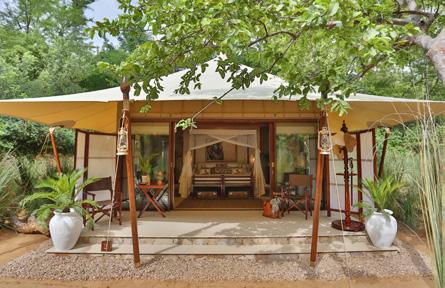
How the properties were rated:
By employing a combination of qualitative and quantitative methods to analyse our data, we were able to cross-tabulate variables, investigate hypotheses, and examine the profiles of our respondents with respect to a certain set of characteristics. We were also able to attribute sets of characteristics with different segments of respondents and explore in-depth and complex topics of positive impact.
Firstly, our dataset carries an inherent bias: the survey was exclusively distributed to Jacada’s top-selling properties. Consequently, the data gathered originated from hotels aligning with our client preferences and operating within the countries where we conduct business. Additionally, there’s a possibility that not all respondents provided accurate responses. Language barriers posed another challenge, with approximately 1% of surveys submitted in languages other than English, necessitating translation during the analysis phase. These language barriers may have hindered respondents’ ability to answer questions accurately. During later stages of analysis, we also discovered discrepancies in how respondents interpreted
answer options. Some respondents opted for conservative responses, resulting in lost points, while others tended to overstate their achievements. There is also the inevitable element of self selection: properties with an interest in the survey’s subject matter would be more likely to complete it.
During the course of this study, we’ve come to realise a significant challenge that lies ahead for all of us is collaboration. Jacada Travel is not the first in conducting such studies, nor will we be the last. As an industry, we’re continuously striving to improve supply chain standards, resulting in increasingly intricate surveys for our partners. Properties are inundated with similar requests for information, often with minor variations, from various partners, making it increasingly difficult to garner enthusiasm from those hesitant to complete yet another sustainability survey. There is clearly a growing need to approach future analysis in a more collective way.
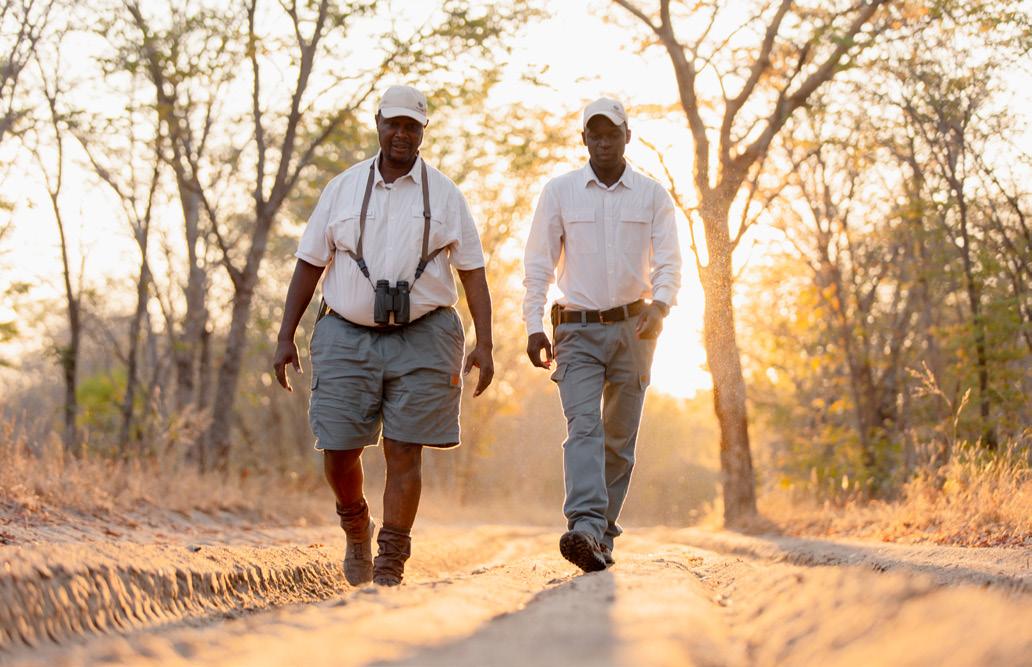
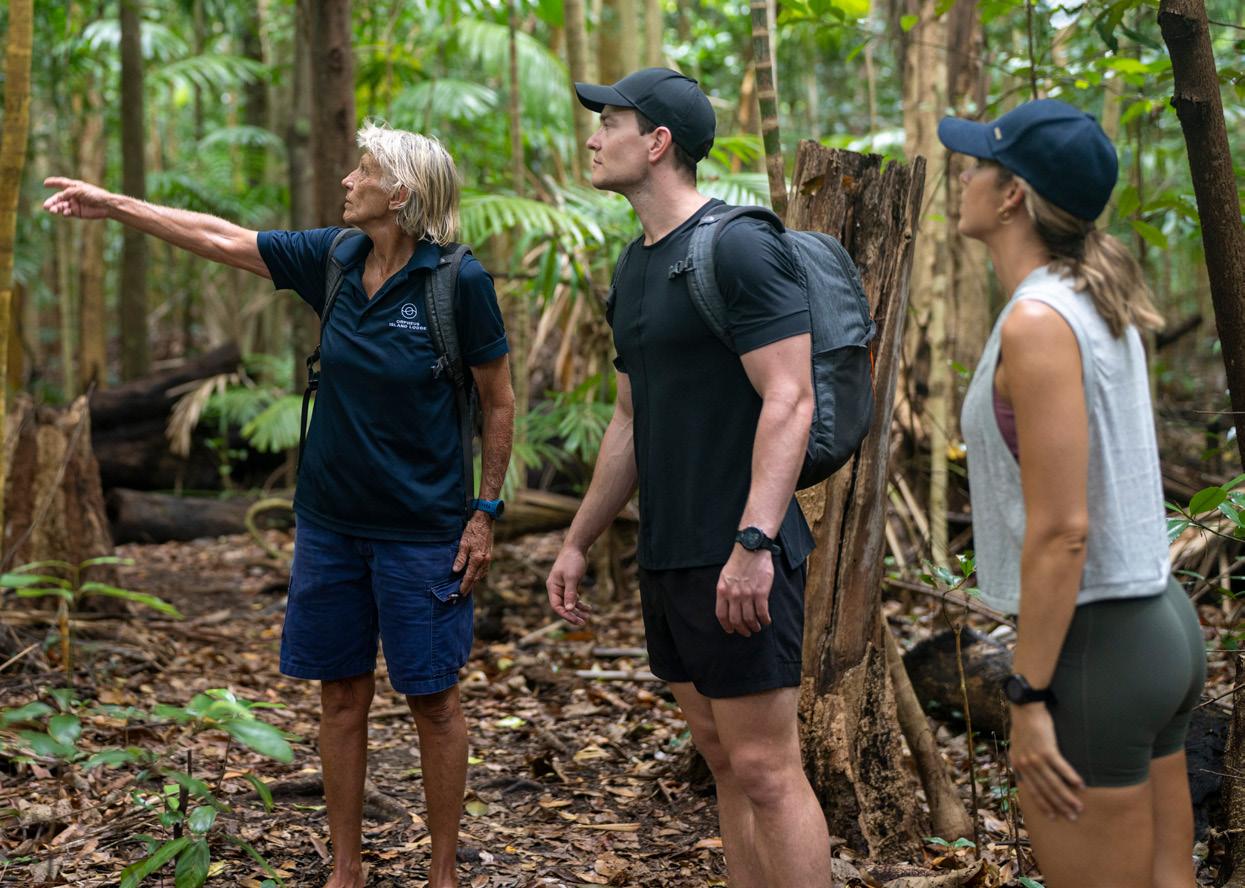

97%
of respondents reported undertaking some form of sustainability-related action
Sustainable Tourism and positive impact tourism are not mutually exclusive terms. We firmly believe that for tourism to truly have a positive impact, it must operate sustainably. What differentiates the two is that whilst sustainability mitigates negative impact, positive impact tourism seeks out ways to positively impact the environment, the community, wildlife, the climate, or all of the above. When curating Jacada’s Positive Impact Collection, it was essential for us to ensure that the properties not only demonstrated a strong commitment to sustainability but also engaged in social and environmental initiatives that give back to local communities or preserve, protect, and regenerate ecosystems.
Our findings revealed a promising trend in our dataset towards increasing the focus on sustainability. A staggering 97% of respondents reported undertaking some form of sustainability-related action, with 41% of them additionally allocating profits towards meaningful social and environmental initiatives. This suggests a growing and emerging trend towards Positive Impact Tourism
The range of social and environmental initiatives was broad, but could be categorised into four main categories.
Engaging in social and environmental initiatives
Positive Impact Tourism
Operating in a way that is sustainable
Initiative categories:
A substantial portion of the properties we surveyed demonstrated a strong commitment to investing in education initiatives. This trend was particularly pronounced among organisations operating within Africa, where securing adequate funding is often imperative. However we also identified examples of accommodation providers financing, and even leading, customised education programmes across diverse regions including Australia, New Zealand, South and Southeast Asia, and Latin America. Environmental education took centre stage, with properties leveraging their resources such as accommodation, guides and naturalists to facilitate eco-camps, forge partnerships with local schools and offer environment and climate change education opportunities within their respective communities. Exemplary cases
include Orpheus Island’s support for the Australian Youth Climate Coalition, a Townsville Schools Programme which aims to empower youth to take proactive steps on climate action. Similarly, the Children in the Wilderness programme, operating since 2001 and, like Jacada, part of the Wilderness brand family, has been instrumental in developing environmental education across multiple countries in Africa. By facilitating annual eco-camps and providing scholarships for both school and tertiary education, they have enabled many graduates to embark on successful careers in conservation. These programmes adopt a strategic, long-term approach to conservation efforts, with a primary focus on inspiring and equipping the next generation of leaders and decision-makers in the field.
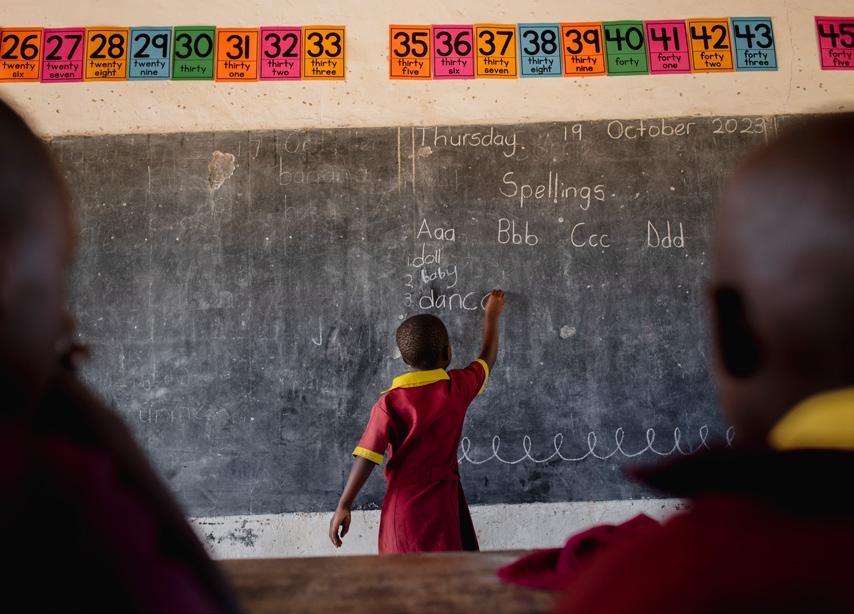
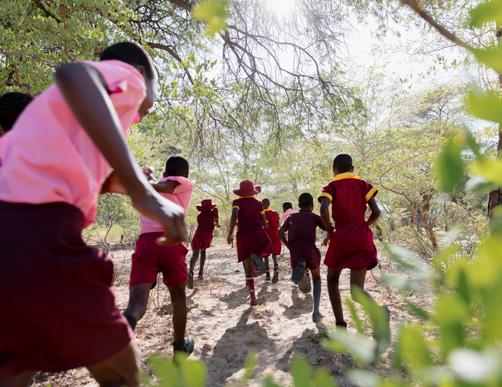
Initiative categories:
Our survey findings revealed an impressive conservation effort, with respondents collectively preserving 3,041,487 hectares (7.5 million acres) of land. To contextualise this achievement, this is the equivalent of the size of Belgium or approximately 5.6 million football (soccer) fields. Our oceans, soil and forests play a crucial role in absorbing about half of all greenhouse gases produced, making their protection paramount in the fight against climate change. Encouragingly, we observe a growing trend within our industry towards land protection and biodiversity measurement. Notable examples include Song Saa Resort in Cambodia, which, in collaboration with its foundation, has safeguarded over 10,000 hectares of mangrove forest since 2010 and planted more than 1,700 mangroves. Similarly, Pacuare Lodge in Costa Rica has acquired 340 hectares (840 acres) of primary rainforest along the Pacuare River, aiming to preserve the local ecosystem and offset the carbon emissions generated by their vehicles. We also take great pride in highlighting that the Wilderness Group, of which Jacada is a part, demonstrated exceptional commitment to conservation, currently stewarding an impressive 2.3 million hectares (5.6 million acres) of land. With an ambitious target to expand this to 5 million hectares by 2030, Wilderness sets a remarkable standard for environmental stewardship within the industry.
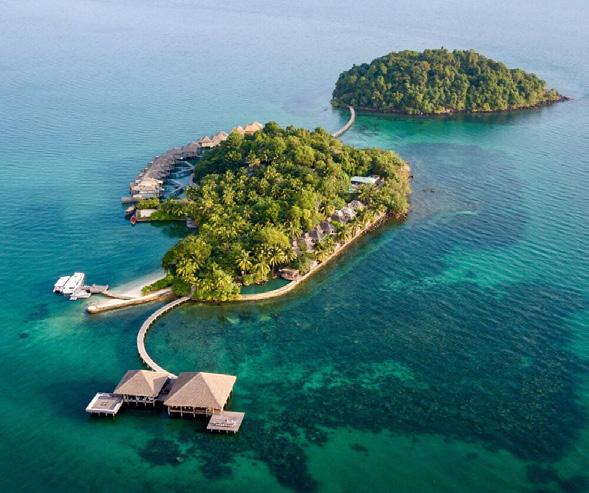
Respondents collectively preserved:
3,041,487 hectares of land
Equal to or
5.6 million football fields
The size of Belgium
10,000
hectares of mangrove forest safeguarded by Song Saa Resort in Cambodia since 2010
Initiative categories:
Among the properties we surveyed operating in regions known for wildlife tourism, a prevalent trend was the support for wildlife initiatives. In Africa, particularly, the approach to wildlife conservation was reflective of the long tradition of conservation initiatives on the continent with well-developed and sophisticated methods fostered through collaborations with coalitions and non-profit conservation organisations. These partnerships have effectively engaged the tourism industry in a shared mission of wildlife protection. As a result, African properties, have actively participated in conservation efforts. This involvement takes various forms, including providing valuable data to animal research organisations and offering direct financial support to wildlife protection projects. This collaborative approach underscores the pivotal role that both the tourism sector and conservation organisations play in safeguarding wildlife populations and their habitats.
A great example of positive impact wildlife tourism can be seen at Angama Mara in Kenya. Through a series of collaborative efforts with local wildlife non-profits like the Mara Conservancy, the Mara Predator Project, the Mara Elephant Project, and the Mara Raptor Project,
Angama Mara has effectively addressed common objectives of mitigating poaching and minimising human-wildlife conflict within the Maasai Mara Game Reserve. These cross-industry partnerships showcase the power of collective action in promoting sustainable wildlife conservation practices and fostering harmonious coexistence between humans and wildlife in the region.
However, wildlife conservation efforts weren’t confined solely to wildlife lodges. We also saw some impressive examples of wildlife initiatives from properties operating outside of the wildlife tourism sector. For example, in the picturesque Tuscan countryside of Italy, Borgo Pignano has undertaken measures to safeguard local bee populations. They have cultivated a diverse array of flowers and plants specifically aimed at attracting bees and aiding in the pollination of vegetables and fruit trees.. In Portugal, Six Senses Douro Valley has partnered with Associação para o Estudo e Proteção do Gado Asinino, an environmental NGO dedicated to the conservation of the Miranda donkey, a local breed that faced extinction only two decades ago. Thanks to their efforts, the population of Miranda donkeys has flourished, now numbering around 1,500.
Angama Mara’s collaborative efforts with local wildlife non-profits like the Mara Conservancy, the Mara Predator Project, the Mara Elephant Project, and the Mara Raptor Project have effectively addressed common objectives of mitigating poaching and minimising human-wildlife conflict within the Maasai Mara Game Reserve.

Initiative categories:
In considering the community benefits, the typical associations within our industry centre on indirect enhancements to the local economy and job creation. Properties part of Jacada’s Positive Impact Collection have gone beyond conventional measures, leveraging their profits to address some of the world’s most intricate social challenges. They have integrated community decisionmaking into their operations to ensure equitable benefits for all stakeholders involved. In the Peruvian Amazon, Posada Amazonas, in collaboration with the Eseeja de Infierno Native Community, allocates a significant portion of its profits to the community. Under this arrangement, 75% of the business-generated profits are directed straight to the community, while the company retains only 25%. This model not only fosters economic empowerment but also reinforces the principle of shared prosperity, demonstrating 30m
a commitment to sustainable development and inclusive growth. Over the span of 20 years, the project has contributed over 30 million soles (approximately 7.7 million USD) to the community.
In the Zambezi region of Zambia, Green Safaris and their non-profit partner By Life Connected established the Mukuni Community Farm at the end of 2020. The primary aim of this initiative is to create a fully sustainable, self-sufficient, and community-managed farm that not only supplies fresh produce to lodges and businesses in the area but also functions as a learning centre. Moreover, it endeavours to establish resilient food systems that address nutritional challenges within local communities. This multifaceted approach not only fosters economic growth but also promotes environmental stewardship and community empowerment.
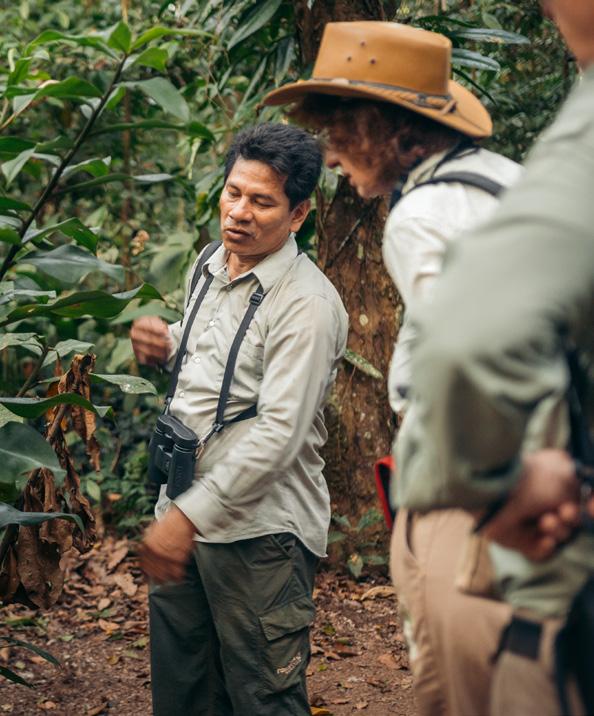
soles (approximately 7.7 million USD) contributed to the community in 20 years by Posada Amazonas and the Eseeja de Infierno Native Community.
While education and human services receive a significant 29% share of charitable donations in the U.S, it’s surprising to note that only 3% of donations are directed towards environment and climate initiatives. This disparity demonstrates that conventional approaches to addressing global challenges often prioritise human issues over environmental concerns and neglect to acknowledge the interconnectedness between them. Interestingly, our study uncovered a divergent trend. Charitable initiatives within the tourism industry tended to address both environmental and social issues concurrently, recognizing the intrinsic relationship between the two. To illustrate, 9% of our respondents did not support any social or environmental causes, while 29% exclusively supported social initiatives and 9% solely backed environmental causes. The majority, comprising 53%, supported initiatives that addressed both environmental and social concerns simultaneously. This shift suggests a progressive evolution in the support of such initiatives within the tourism sector. Environmental conservation is no longer relegated to the sidelines but is recognized as an integral component of social responsibility. Similarly, communities are viewed not as separate entities from conservation efforts but as essential components of a holistic conservation framework. This approach reflects a growing understanding of the interconnectedness between environmental sustainability and social well-being.
Exploring successful conservation models that integrate community empowerment offers valuable insights. Jacada’s parent company, Wilderness, has been preserving and restoring precious wilderness and wildlife in Africa through high-end conservation tourism for the last four decades. What sets Wilderness apart is their comprehensive approach, which extends beyond environmental preservation. By incorporating poverty alleviation, empowerment programmes and educational initiatives into their strategy, they are forging a conservation economy that fosters self-sustaining communities. This holistic approach not only ensures the preservation of natural habitats but also empowers local communities to thrive, ultimately enabling Wilderness to achieve its conservation goals effectively.
We found smaller-scale examples skillfully intertwining environmental and social justice in almost every country. On the East Coast of Sri Lanka, Gal Oya Lodge has taken proactive measures to address poaching, which is often driven by poverty and has resulted in biodiversity loss in the country’s eastern forests. Recognising the interconnectedness of social and environmental issues,
the lodge has employed ex-poachers, providing them with alternative livelihoods and opportunities to safeguard, rather than harm, the dwindling wildlife population in the region. Similarly, not far away in Cambodia, The Bensley Collection’s Shinta Mani Wild has established a partnership with the Royal University of Phnom Penh. Through this collaboration, the resort offers bursaries to students pursuing studies in conservation. By investing in the education of local youth, Shinta Mani Wild is empowering them to become knowledgeable stewards of their own land, fostering a sense of ownership and responsibility towards environmental conservation.
Which causes did respondents support?
Neither social or environmental causes
Social causes only Environmental causes only Both

Perhaps one of the most compelling tourism models that embodies a combined focus on social and environmental impact is the conservancy model. This innovative approach, observed in both Africa and Latin America, revolves around community-based natural resource management partnerships aimed at ecosystem restoration and land stewardship. In this model, tourism providers typically engage by paying lease fees to local communities and actively participating in the establishment of communityled conservation and development projects. By integrating tourism with conservation efforts and community empowerment, the conservancy model demonstrates a holistic approach to sustainable tourism that not only preserves natural ecosystems but also fosters socio-economic development within local communities.
The conservancy model is widely used in the luxury travel sector in Africa, successfully restoring habitats and bringing back wildlife into areas that have experienced significant biodiversity loss. A notable example is the Namunyak Community Conservancy, supported by Sarara camp in Samburu, Kenya. Spanning 850,000 acres of pristine wilderness, this conservancy serves as a sanctuary for various species, including Kenya’s second-largest elephant population, the country’s largest population of Reticulated Giraffe, as well as the endangered Grévy’s Zebra, hyena, kudu, lion and leopard. Above all, it is home
850,000
acres in the Namunyak Community Conservancy, supported by Sarara camp in Samburu, Kenya, which serves as a sanctuary for a number of endanged species.
23,000
Nomadic Samburu pastoralists call the Namunyak Community Conservancy home.
to approximately 23,000 nomadic Samburu pastoralists. The objective of the conservancy is to forge a partnership with indigenous communities, aiming to protect biodiversity, improve livelihoods, preserve cultural heritage and foster economic resilience.
Still in East Africa, in another area of Kenya, Laikipia, the Mugie Conservancy operates with support from tourism providers, blending sustainable conservation practices, productive rangeland management, community collaboration and responsible tourism initiatives. Governor’s Mugie Camp, one of two small properties situated within the conservancy, plays a pivotal role by paying monthly lease fees and nightly bednight fees for each guest. These contributions not only sustain the conservancy’s operations but also support its overarching objectives of conservation and community development. These examples illustrate how the integration of social and environmental justice principles can pave the way for a more sustainable future, benefitting ecosystems and local communities alike.
In our Positive Impact category, we identified a total of 79 properties. Among these, 75% operated within wildlife-rich areas, while 1% were situated on water bodies. Additionally, 82% operated within regions boasting significant biodiversity, with only 5% located in urban settings or city hotels. Geographically, 58% of these properties were found in Africa, 18% in the Asia-Pacific region, 5% in Europe and 16% in Latin America. This diverse distribution underscores the global reach and impact of positive sustainable practices within the hospitality industry.
In our survey, Kenya, South Africa, Rwanda, and Costa Rica emerged as standout performers, boasting multiple examples of Positive Impact properties and achieving higher overall scores compared to other surveyed countries.
Notably, within each of these countries, governmental decisions have played a crucial role in shaping distinct approaches to sustainable practices. This observation underscores the significance of supportive regulatory
frameworks and government policies in fostering a conducive environment for sustainable tourism initiatives.
For example, in South Africa, the challenge of load shedding, characterised by interruptions in electricity supply, has pushed the exploration of renewable energy solutions into the private sector. Conversely, in Costa Rica, the government has provided full-fledged support for renewable energy initiatives, resulting in approximately 95-98% of the country’s energy being sourced from renewable sources. Interestingly, we observed that properties in Costa Rica were less inclined to track their carbon emissions compared to neighbouring countries. However, they exhibited a higher propensity for implementing green supply chain practices, benefiting from the accessibility and abundance of green options in the region.
In Rwanda, the Rwanda Forest Authority has embarked on an ambitious reforestation initiative. The goal is to plant over 100 million trees by 2030, positioning Rwanda as a noteworthy player in responsible tourism
Positive Impact properties were identified in 26 countries:
aimed at ecosystem regeneration. The diversity of trees planted and adequate stakeholder engagement to ensure that local communities play their part in protecting them will be critical determinants of the overall impact of this tree planting initiative, but the government has yet to present their detailed strategy.
We also saw the growing trend of positive impact tourism mirrored in the responses of properties from various other destinations in Africa. Kenya was one example of a country renowned for its established ecotourism practices, where we saw this reflected in the responses we received. Notably, Kenyan properties demonstrated a sophisticated approach to environmental impact and waste management, showcasing some of the most advanced practices observed in our survey. This progressive stance can be attributed, in part, to recent legislative changes aimed at environmental conservation. In a groundbreaking move in 2017, the Kenyan government implemented a ban on plastic bags, followed by a comprehensive prohibition on all single-use plastics in 2020. These regulatory measures have undoubtedly influenced the industry’s approach to sustainability and waste reduction.
This underscores the significance of governmental support in driving wider goals of sustainable development within the tourism sector. While grassroots initiatives play a crucial role, government intervention and policy measures are instrumental in catalysing industry-wide change and achieving holistic sustainability objectives.
95-98%
100m

If we were to pinpoint a single factor that distinguishes a property’s effectiveness in generating positive impact within its destination, it would be their ability to establish and nurture effective partnerships. The vast majority of properties within the Positive Impact Collection reported actively engaging in multi-stakeholder partnerships, enabling them to leverage knowledge and resources from various entities including government bodies, non-profits, local community leaders and other stakeholders. The benefits of collaborating with a diverse range of stakeholders to address common goals are widely acknowledged. By pooling resources and expertise, partnerships enhance the legitimacy of initiatives, facilitate the scaling of effective solutions, foster a more inclusive dialogue, and enable the collective tackling of larger issues.
Some great examples of this type of collaboration include the Peru-based Inkaterra hotel group who formed a strategic alliance with the AJE Group, the Machu Picchu Town Hall and the Natural Area and National Park Service. Together, they have embarked on a strategic alliance aimed at transforming Machu Picchu into the world’s first carbon neutral wonder and securing certification as the first international travel destination to achieve carbon neutrality.
Another example is that of Tanda Tula Safari Camp in South Africa. As a founding partner of the Timbavati Supply Chain Development Programme, the camp actively collaborates with and supports local businesses in surrounding communities to enhance their capacity as suppliers to the safari lodge industry and the broader wildlife economy. A prerequisite for businesses to join the hub is a commitment to sustainable business practices and the provision of apprenticeships and educational opportunities for community members. This approach not only drives economic prosperity but also ensures that local communities are integral participants in and beneficiaries of the wildlife and tourism sectors.
It’s highly probable that other businesses operating in your location encounter similar social and environmental challenges as your organisation. However, you do not need a specific goal or outcome in mind to start forming an alliance. Getting stuck on a specific goal too early can sometimes hinder our ability to listen, learn, and collaborate. If you can, make a space (either virtual or in person) where you can bring together a wide variety of stakeholders. This may include local NGOs, DMOs, municipalities, and local business owners. Use the space to gain a greater understanding of some of the common challenges being faced, and make time to brainstorm potential solutions. Once common goals have been identified, you will be able to narrow down partners that you feel aligned with and you can outline the potential opportunities of working together.
There are also several membership organisations that can help to provide you with networking and collaborative opportunities across the industry, such as The Long Run, Regenerative Travel, and The Conscious Travel Foundation. These communities not only provide you with collaborative support, but also offer access to learning and education opportunities, and enable you to keep an essential finger on the pulse for industry best practice with regards to sustainability. Membership fees are typically calculated on a sliding scale basis, removing potential barriers to entry for smaller organisations.
The Earth is warming, sea-levels are climbing and we’re witnessing an increase in the frequency of floods and wildfires.These changes are already affecting both natural ecosystems and social structures. Given that the tourism industry is susceptible to the impacts of climate change and is a significant contributor to it, it is imperative for our sector to strive towards implementing science-based decarbonization targets.
Concerningly, our survey findings indicated that the majority of hotels assessed had taken minimal steps, if any, to reduce their emissions.
In the climate section of our survey, we asked respondents whether or not they were tracking their emissions (58% were not), whether they were utilising green energy sources such as hydropower or solar power (67% were not), and what measures they had in place to reduce water and energy consumption (mixed results, but poor overall compliance to energy reduction). In terms of the scores, Latin American properties had the lowest overall climate score (an average of 8.7 out of a possible 21 points). This was followed by AsiaPacific properties (an average of 9/21), European properties (9.5/21), and then African properties 10.5/21).
58%
respondents said they not they were tracking their emissions
67%
respondents said they not utilising green energy sources such as hydropower or solar power
The above graph was constructed based on responses to questions pertaining to hotels' renewable energy sources, emission tracking practices, and energy conservation initiatives such
According to UN recommendations and the Paris Agreement’s guidelines to limit global warming to no more than 1.5°C, emissions must be reduced by 45% by 2030. Hence, the travel industry must act swiftly and effectively to meet these global targets.
There are, however, notable examples of properties excelling in the fight against climate change. Orpheus Island, for instance, stands out as one of three island resorts in the Great Barrier Reef with the capability to generate up to 100% of its energy needs from solar power. They have supported initiatives such as Solar Citizens, promoting the economic and job benefits of renewable energy projects in Queensland and the Australian Youth Climate Coalition’s Townsville Schools Program, empowering youth to take the lead on climate action.
The Boena group’s Pacuare Lodge in Costa Rica was also a great example of utilising the resources available to you to reduce energy consumption and work towards decarbonisation. Built on the banks of a fast-moving river, the lodge is powered by hydroelectric power, and a high emphasis on local sourcing reduces their overall carbon footprint.
In Zambia, Green Safaris has spearheaded the development of the world’s first electric safari jeep, sharing the technology openly to facilitate its adoption by other tourism providers. These electric-powered vehicles offer a quieter and more environmentally friendly safari experience. Undoubtedly, such innovations are poised to be replicated worldwide in the years ahead.
If you don’t have specific expertise within your organisation, getting started on the task of decarbonisation can seem daunting, but there are many tools to help you and it is not as difficult as you think. One such tool that was mentioned frequently by our partners in our survey was Weeva, a sustainability management system tailored for the travel industry, to aid in tracking their carbon emissions.
For those seeking some guidance, Ecollective’s carbon literacy training offers concise and informative sessions covering the fundamentals of decarbonisation. We would also recommend that properties join the 850+ other tourism providers in signing the Glasgow Declaration and subsequently then declare a Tourism Climate Emergency to get started on a path that leads to tracking, reporting, and reducing emissions.This proactive step is helpful to set you on a trajectory towards systematically tracking, reporting and reducing emissions.

100%
of energy needs can be generated from solar power at Orpheus Island, Australia. One of only three island resorts in the Great Barrier Reef able to do so.
In our survey, we encountered a few properties that didn’t achieve the expected scores. These were well-established accommodation providers within our industry, some of which had even garnered prestigious awards for their sustainability efforts. It was surprising to discover that despite their outward appearance of success, these properties were not always on the path toward holistic sustainability. The issue we identified with these properties stemmed from a phenomenon known as silo mentality. This occurs when properties initiate a commendable sustainability endeavour, such as banning plastic, but subsequently become so entrenched in their mission that they neglect other essential sustainability practices across their business. As a result, their commitment to other aspects of sustainability, such as social ethics or climate action, is lacking.
While we applaud industry leaders for spearheading certain initiatives, as highlighted throughout this report, true positive impact can only be attained holistically. This entails considering all stakeholders, including both human entities such as local communities, and non-human elements like the environment, climate, and wildlife. Adopting a silo mentality –concentrating solely on one aspect of sustainability while disregarding others –hinders our collective progress rather than propelling it forward.
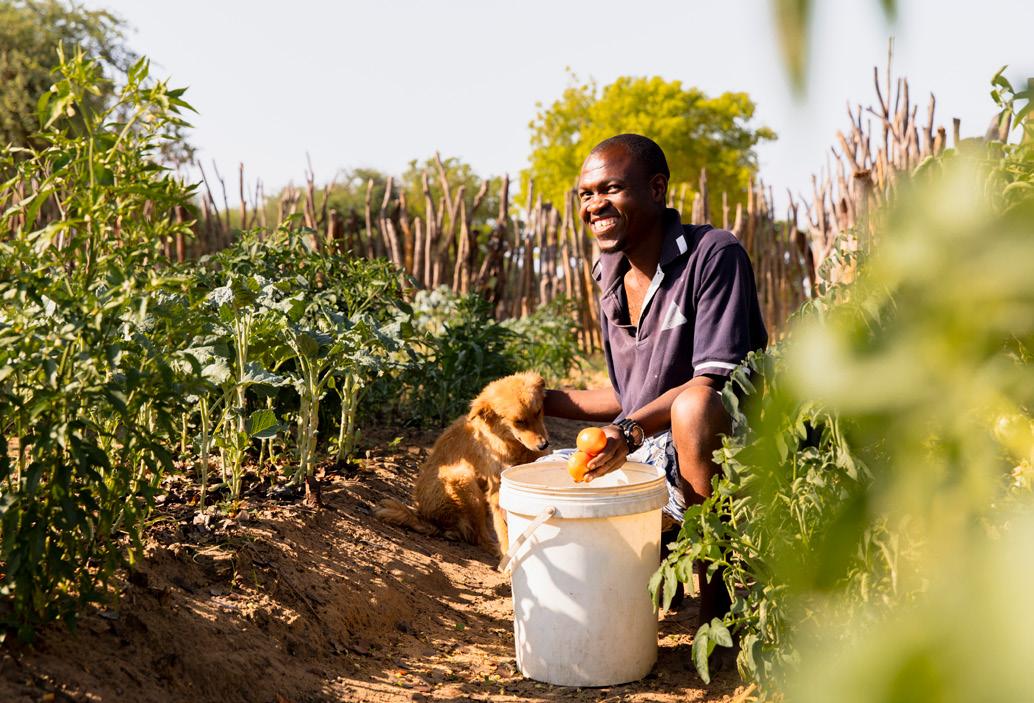
There’s a saying that carries significant meaning in the realm of Positive Impact: setting a goal is the initial stride toward attaining it. This was borne out by our findings:
Planning offers direction and purpose and our analysis revealed a notable correlation between having a written plan of action and achieving higher sustainability scores. Properties with transparent responsible travel policies were more inclined to track carbon emissions (37% vs. 15%), engage in social initiatives (67% vs. 47%) and set systematic plastic reduction targets (78% vs. 42%).
While this is positive to see, our survey also shed light on a tendency within our industry to embark on sustainability endeavours without a clear endpoint in mind.
There are several potential explanations for this phenomenon:
1. Sustainability is constantly evolving, making it challenging to define our ultimate destination.
2. Many of us face resource constraints. While an increasing number of hotels recognise the value of having a dedicated sustainability personnel, it remains uncommon in our industry. Sustainability initiatives often rely on team members volunteering their time, resulting in difficulty allocating sufficient time and resources to develop a structured plan.
Whilst dedicating a full-time sustainability role may not be feasible for smaller organisations, our survey data suggests that allocating time and funding to establish a plan before beginning initiatives is worth doing.
Writing things down doesn’t just help you to remember them, it provides clarity across your organisation (and to your clients and suppliers) as well as helping you to get clear on your goals and intentions with your sustainability initiatives. If you are unsure where to start, I would recommend using the Global Sustainable Travel Council Criteria, which provides a clear roadmap for all tourism businesses to get started on their sustainability journey. I would also recommend familiarising yourself with the SDGs to assess global goals for 2030, and work backwards from there, being realistic about what is and isn’t possible for your organisation in the next few years.
Properties with transparent responsible travel policies were more inclined to:
track carbon emissions engage in social initiatives set systematic plastic reduction targets
Properties with written responsible travel policies
Properties without written responsible travel policies
As explored throughout this report, positive impact does not exist in a silo. It requires a level of collaboration and an ability to approach sustainability holistically.
Recognising the interconnectedness of global issues such as climate change, biodiversity loss and inequality is crucial to understanding that none can be solved without tackling all of them at the same time. Tourism, with its potential to influence all three, can either drive significant change or contribute to the degradation of our planet. It is therefore absolutely critical that we transition to a net-positive form of tourism. Our approach needs to give back to people and the planet, incorporate diverse community perspectives, and consider both human and non-human entities such as the climate, wildlife and the environment as essential stakeholders. It is only then that we can insure the industry’s future success as well as our collective wellbeing.


Jacada Travel was established by Alex Malcolm in 2008 and now offers completely personalised, luxury trips with a conscience across seven continents. Jacada is driven by a mission to make travel uplifting for everyone involved, done in a way that respects local communities and preserves the intrinsic value of ecosystems.
A part of Wilderness since 2020, Jacada continues to collaborate with non-profit partners to further this mission. Our collaboration with the non-profit Childsafe has enabled us to provide comprehensive education and training to our team about child safeguarding within the tourism industry. This partnership has a proven roadmap to ensure that children are not adversely impacted by our trips, directly or indirectly.
Our partnership with World Animal Protection has been instrumental in developing our animal welfare policies. Drawing on credible resources and expertise from those deeply knowledgeable in the field, we’ve established robust guidelines to ensure the well-being of animals in our care.
Additionally, Wilderness, has over 100 non-profit partnerships. This extensive network enables us to effectively navigate community development, environmental protection and wildlife conservation initiatives across a wide range of regions including Namibia, Rwanda, Botswana, South Africa, Tanzania, Zambia, and Zimbabwe.